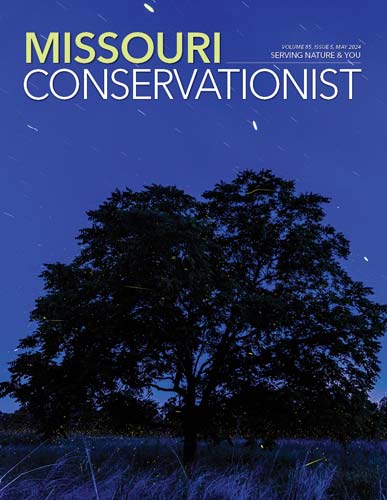Got a question for Ask MDC? Send it to AskMDC@mdc.mo.gov or call 573-522-4115, ext. 3848.
Q: If a volunteer or parent accompanies a child or children while fishing, does that person need a fishing license?
A fishing license is not required if the adult is not actively fishing and is only accompanying a child. Parents or volunteers accompanying a child are allowed to assist with baiting hooks, untangling lines, or removing fish from the hook without a license. However, active assistance with taking or attempting to take fish, such as casting, retrieving, or setting the hook, would generally require a fishing license.
The ages of the children participating is another thing to consider. A fishing license is not required for anglers ages 15 years and younger. However, anglers that are 16 or older must have a fishing license.
Q: What type of sparrow is this?
This is a Lincoln’s sparrow, as evidenced by the neat streaking on the breast.
As adults, a Lincoln‘s sparrow’s upperparts — its back and wing coverts — are streaked with brown, gray, tan, and black. These birds have medium-gray heads with brown crowns and a light gray central crown stripe. They have a thin, dark-brown eye stripe and their eye rings are pale with buffy streaks on the lower edges of their cheeks, also known as a “malar stripe.” These sparrows lack wing bars. They also have unmarked white bellies and a buffy chest and flanks with fine black or deep brown streaks on their breast.
Overall, its gray face, pale eye-ring, and crisp streaking with buffy wash on its breast and sides help distinguish this sparrow from others.
When disturbed, this sparrow sometimes raises its crown feathers into a small, streaked, gray and brown crest. The Lincoln's sparrow’s song is a loud series of trills and buzzy notes, similar to a house wren’s. Their call is a chup and a zzeee. To learn more about Lincoln’s sparrows, visit short.mdc.mo.gov/4Bf.
Q: We have a lot of these toads on my property. I have seen at least six or seven in the past year, all of them black in color. What can you tell me about them?
Two potential reasons exist for these American toads’ unusually dark pigmentation — temperature or genetics.
When toads and many other herps get extremely cold, they will turn dark, even black. As they warm, a more brownish coloration will reappear. In spring, mild days and cold nights are common. It would be interesting to know when the toad is warmed by the sun for an hour or so if it starts to turn browner in color.
This could also be a melanistic individual. Due to genetic mutation, melanism is defined as the increased amount of black or nearly black pigmentation of skin, feathers, hair, etc. in an individual or organism. These mutations are known in many animal groups, including mammals, amphibians, and reptiles, and we do see this on occasion in some frog and turtle species in Missouri.
“This toad looks healthy, and I do not believe there is any concerns related to disease or its health in general,” said Missouri State Herpetologist Jeff Briggler.
And More...
This Issue's Staff
Editor - Angie Daly Morfeld
Associate Editor - Larry Archer
Photography Editor - Cliff White
Staff Writer - Kristie Hilgedick
Staff Writer - Joe Jerek
Staff Writer – Dianne Van Dien
Designer - Shawn Carey
Designer - Marci Porter
Photographer - Noppadol Paothong
Photographer - David Stonner
Circulation – Marcia Hale






















